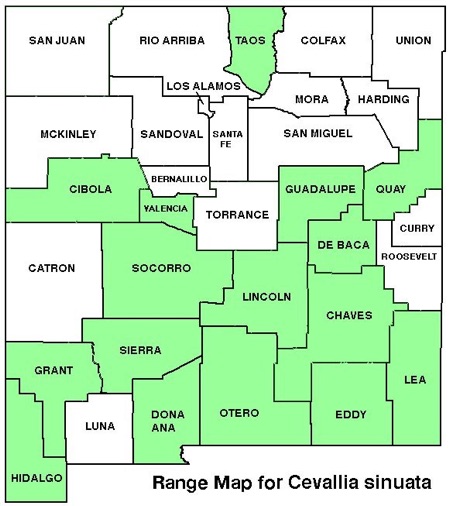WILDFLOWERS OF NEW MEXICO

Stand clear of this 1–3-foot tall, bad-boy plant with tiny flowers in a congested cluster (cyme). The “stinging” part of the common name is well earned. Barbed hairs containing painful stinging chemicals cover the stem, leaves, and flowers.
FLOWERS: June–October. The 1/4–3/8-inch (6-10 mm) long flowers have 5 narrow, pointed, yellowish petals and 5 petal-like sepals with a downy covering of hairs. The flowers form in dense, rounded heads of buds at the tip of stems (peduncles) up to 4 inches long. Flowers open in the morning so only the tight cluster of buds or a few persistent flowers may be apparent.
LEAVES: Alternate. Blade lance-shaped, wavy lobed, 3/4–3-inches (2–7.5 cm) long, deeply lobed or coarsely toothed along the midvein (pinnately), and armed with stinging hairs.
HABITAT: Dry limestone, sandy, gravelly soils, roadsides, disturbed areas; grasslands, desert foothills.
ELEVATION: 3,250–5,500 feet.
RANGE: AZ, NM, OK, TX.
SIMILAR SPECIES: The above characteristics distinguish this lone species of the Cevallia genus in the North America.
NOTES: Three of the four plant families in the world with members with stinging hairs that contain formic acid occur in NM. (Euphorbiaceae–Stinging Nettle, Bull Nettle; Loasaceae–Cevallia; and Urticaceae–Noseburn Nettle).
NM COUNTIES: The southern half of NM in low- to mid-elevation, arid habitats: Chaves, Cibola, De Baca, Dona Ana, Eddy, Grant, Guadalupe, Hidalgo, Lea, Lincoln, Luna, Otero, Quay, Sierra, Socorro, Taos, Valencia.

STINGING CEVALLIA
CEVALLIA SINUATA
Stickleaf Family, Loasaceae
Perennial herb
Beware: Stinging hairs with formic acid cover the plant.



THE CONTENTS OF THIS WEBSITE ARE COPYRIGHTED AND CANNOT BE USED
WITHOUT PERMISSION OF GEORGE OXFORD MILLER



EMAIL ME